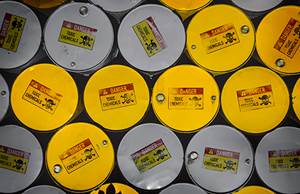Cleaning Tips for Beginners
PCx showed that some shops are using patchwork cleaning processes.
At the Parts Cleaning Expo (PCx) earlier this year in Columbus, Ohio, we couldn’t help but notice that at least some of you are limping along with informal, patchwork cleaning processes. Problems that go along with ineffective, inconsistent cleaning include variable yield, increased rejects, high labor costs and excessive chemical and waste management costs.
Inefficient Cleaning Processes
Signs that it’s time to switch to a cleaning process that works can vary. If your shop’s parts are held under the tap and scrubbed with a brush or dunked in grimy buckets filled with mysterious, murky liquids, it’s time for a new cleaning process. If dirt is removed with stacks and stacks of shop towels that litter work surfaces and overflow trash cans or laundry containers, it’s time for a new cleaning process.
If there are dozens of industrial aerosol and spray bottles as well as household cleaners that are good for kitchens or floors that festoon the assembly area, and/or your cleaning products have a poorly defined and ever-changing assortment of ingredients, then it’s time for a new cleaning process. It’s impossible to have decent process control if you don’t pin down what your cleaning process is.
Do your workers have well-developed biceps on their dominant side because they hand-slosh containers of parts to separate metal fines from product, and the process degrades as physical fatigue sets in? If so, your company needs a better physical fitness plan.
Product and Soil Changes
Manufacturing activities often change gradually. When production volume increases, the impact on cleaning activities may only be considered when failures increase. The product itself may change qualitatively. Smaller parts with tight spacing may need cleaning agents that do a better job of wetting. Changes in the mix of metals may mean that the cleaning process that used to work is no longer successful.
Also, the soils may change. Lubricants and other metalworking fluids have gradually been reformulated nationwide, in part to avoid environmental impact on air quality. The process of machining can change the properties of metalworking fluids, too. The altered fluids can combine
with other soils to form an adherent residue.
Costs
We always start with this advice: First, don’t clean if you don’t have to. Second, understand what you are trying to accomplish in cleaning. Third, clean right away; cured-on or dried-on soil is difficult to remove. A simple immersion process right after machining can reduce or even eliminate the need for cleaning later.
Cleaning costs money. If you need to clean, consider the adage attributed to W.E. Deming: In God we trust, all others must bring data. Suppliers of cleaning agents and cleaning equipment can provide useful information, but look at that information critically in the context of what you need. One manufacturer commented that they abandoned plans for new cleaning equipment when they found it cost more than $100,000, that it took up a lot of space and that it did not work for their entire product line. Therefore, they didn’t set up a formal cleaning process. Let’s think of some other approaches. In the first place, less expensive, compact cleaning equipment could be evaluated. While it is rare that one cleaning process works for everything, you can usually find something that works for most of your product line. In any event, always invoke the concept of quality.
Keep Learning
Uncontrolled cleaning results in high costs and unfortunate consequences to product quality, so dip a toe into the murky waters of cleaning process development. The best way to learn what works is hands-on testing to determine what does and, even more important, what doesn’t work. Some of you came up to us at PCx with tests you were conducting yourselves. Good work! Speaking of hands-on testing, Sam Houston State University and BFK Solutions are partnering to present a practical Product Quality Workshop in cleaning processes and operations in May 2018. We’ll include a lot of demonstrations, so you can experience the joys of failure and success in surface prep.
Related Content
Parts Cleaning Sector Shifts Energy Toward Regulatory Changes
With changes in EPA regulations regarding the use of some popular cleaning fluids, cleaning suppliers and end users are readjusting business strategies and/or cleaning processes to meet new requirements.
Read MoreMeeting Stringent Cleaning Goals With Modular Ultrasonic System
A knee implant manufacturer implements an advanced cleaning system that meets its tight cleaning requirements, including documenting, validating and tracing the entire cleaning process.
Read MoreIn-line Monitoring for Automated Immersion Cleaning Systems
Ecoclean’s Acoustic Performance Measurement (APM) system provides in-line measurement of ultrasonic frequency and power in fully automated immersion cleaning systems on a batch-by-batch basis or at defined time intervals, such as once a shift, day or week.
Read MoreOvercoming 3 Common Challenges With Automated Particle Counting
Facing difficulties while performing particle analysis is normal but should not be discouraging. Here are some ways to handle the most prevalent issues that can arise.
Read MoreRead Next
Emerging Leaders Nominations Now Open
Here’s your chance to highlight a young person in your manufacturing business who is on the path to be a future leader moving your company forward.
Read MoreDo You Have Single Points of Failure?
Plans need to be in place before a catastrophic event occurs.
Read MoreA Tooling Workshop Worth a Visit
Marubeni Citizen-Cincom’s tooling and accessory workshop offers a chance to learn more about ancillary devices that can boost machining efficiency and capability.
Read More












.jpg;maxWidth=300;quality=90)










